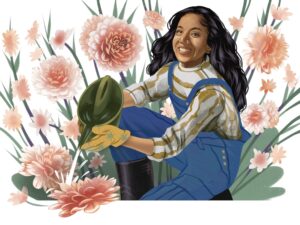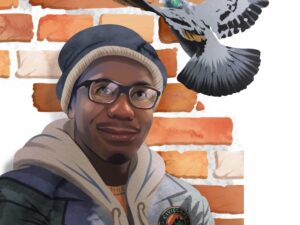
Clay Anderson’s desire to be an environmental educator began when he was 10 years old and has never wavered. He recalls the amazement he felt while watching fish interacting as he peered into his aquarium. Curiosity and wonder are sparks he wants to ignite in teenagers as Youth Program Manager at Golden Gate Audubon Society.
Teenagers have bits and pieces of information, Anderson says, and he stitches the pieces together into a broader picture of concepts that can lead them down the proverbial rabbit hole. Where does oil come from? If plastic comes from nature, why is it bad for the environment? “It starts with one question, then leads to another question and another. And who knows? You may end up in geology or social history. Follow your curiosity, and you’d be amazed where it leads.”
Remember, they are an exotic species in the Western United States, and are rapidly increasing their geographic range and range of habitats. Are they outcompeting or excluding native species in the process? How would we know? We have done almost nothing to monitor changes in the assemblage of mushroom species in areas before and and after the incursion of death caps.
Further Reading
Pringle et al, “The ectomycorrhizal fungus Amanita phalloides was introduced and is expanding its range on the west coast of North America,” Molecular Biology 2009
Lockhart et al, “Simultaneous emergence of multidrug-resistant Candida auris on 3 continents confirmed by whole-genome sequencing and epidemiological analyses,” Clinical Infectious Diseases 2017
Battalani et al, “Aflatoxin B1 contamination in maize in Europe increases due to climate change,” Scientific Reports 2016
Join us for our 2021 virtual Local Hero Awards!
Meet Clayton and this year’s other inspiring local heroes on April 11th. Get a free ticket, or buy a VIP ticket to support Bay Nature. Register here!
Usually, Anderson organizes 40 field trips a year through Audubon, upward of 30 students per trip. A significant barrier preventing students from experiencing nature is transportation, especially for kids of color from challenged economic backgrounds. Currently teaching online, Anderson focuses on empowering students to take self-initiation. “We can’t physically be there, so we encourage them to take themselves on a field trip. Look at what you can do in your backyard.”

For Anderson, the notion of self-initiation harkens back to growing up in the South Side of Chicago. Because of his family’s socioeconomic background, there was little expectation for Anderson to attend college. But he wanted to be a biologist. After studying for two years at Northland College in Wisconsin, he withdrew and moved to California with his father. “I wasn’t educated to go to college, like most people of color in that time, in that place. I realized I was not prepared.”
But Anderson never stopped moving forward. He graduated with a bachelor’s degree in drawing and painting from San José State University. He credits his mother, an illustrator, as his artistic influence. He considers himself a lifelong student, and this philosophy led him to classes at Golden Gate Audubon, including a yearlong intensive Master Birder Course in 2015. For his class project, Anderson presented on the Ridgway’s rail. “We need to do more; that bird is only endangered because of lack of habitat. We’ve destroyed 90 percent of it.” While his classmates utilized technology for their presentations, Anderson went analog, using pencil drawings and pastels; “[it] is my all-time favorite way of communicating.” In 2019, he taught Golden Gate Audubon’s class “Nature Journaling in the Heart of Oakland.” The 10-month course focused on Lake Merritt’s seasonal changes and natural history. It’s Anderson’s twofer: art and environmental education, the best of both worlds.




